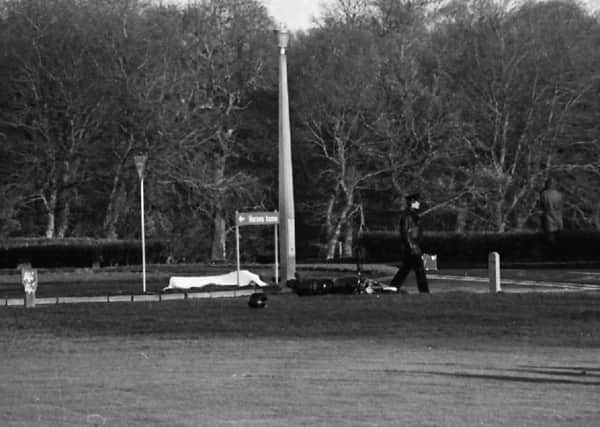FCO had doubts about legality ofSAS shooting


William Fleming, aged 19, from Top of the Hill, and Danny Doherty, aged 23, from Creggan, were shot dead by members of the SAS and 14 Intelligence Company in the grounds of Gransha on December 6, 1984. A telegram from the British Foreign and Commonwealth Office to the British Embassy in Dublin, dated January 9, 1985, explains that the Army had received intelligence suggesting the IRA may have been planning an attack on members of the Ulster Defence Regiment (UDR).
“The security forces had become aware that PIRA terrorists were planning an attack in the vicinity of Gransha Hospital on one or more part-time members of the security forces,” it reads.
Advertisement
Hide AdAdvertisement
Hide Ad“They could not be sure when or where such an attack would take place: nor could they be sure who the targets were. Hence, the security forces kept the whole area under surveillance,” it adds.
The telegram says members of the Army driving a car in the area “identified possible attackers approaching the hospital on a motor cycle.”
“On the information that the security forces had received there seemed good reason to believe that they intended to carry out an attack.
“If the Army Unit failed to intervene at an early stage they were well aware that the attackers might well have killed their target, who might have been any one of a number of people who were then arriving for work at the hospital.
Advertisement
Hide AdAdvertisement
Hide Ad“They decided to halt the motor cyclists by challenging them, since it was their assessment that, otherwise, the security forces would have lost control of the situation and that lives would thereby have been placed at risk.”
In early 1985 the officials said they did not know how the men were killed.
“Precisely how the two men met their deaths is unclear and is the subject of a police enquiry, which is already underway,” they said.
It later transpired that the Army unit had rammed the motorcycle the two IRA men had been travelling on and shot them.
Advertisement
Hide AdAdvertisement
Hide AdThe officials had doubts about whether the shootings were legal.
“It is not possible at present to say whether the use of force by the security forces was within the law,” the Foreign Office telegram stated.
“As is required in all cases in which security forces action leads to death or injury papers will be forwarded to the Director of Public Prosecutions Northern Ireland who will decide whether it is necessary to refer the matter to the courts.”